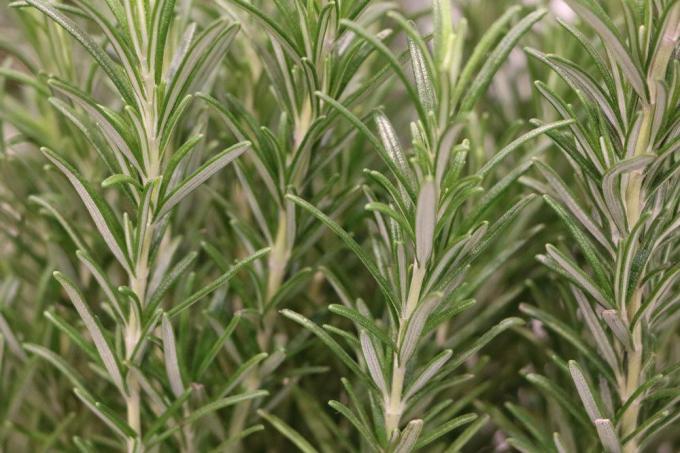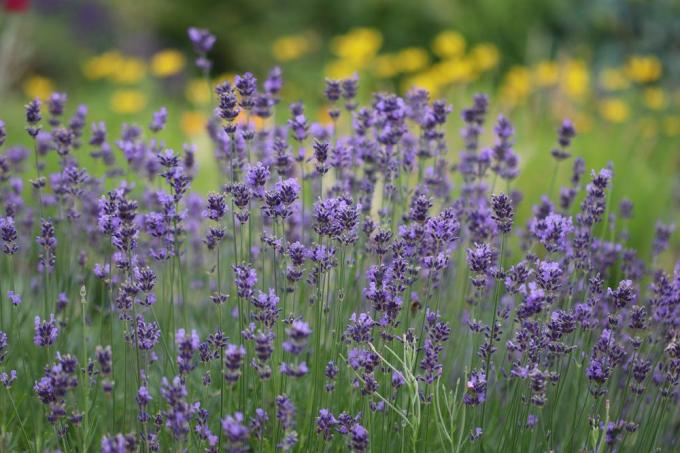
table of contents
- Tick info
- Detect and reduce infestation
- Plants that keep ticks away
- Lemon water
- clean up
- frequently asked Questions
Even if you are always warned not to wear socks, long clothes and sturdy shoes in summer Going to the forest to protect yourself from ticks means that the animals can also be found in your own garden be.
In a nutshell
- Different types of plants distributed in the garden beds can keep the ticks away by their smell and essential oils
- Lemon water for spraying the areas on the garden beds, shrubs, flowers and the race can be made by yourself
- Fight the arachnids on the host, in this case the mice, directly with the tick roller from the trade
- Only tidy, well-kept, sunlit and therefore dry and warm gardens can be safe from tick infestation
- If you suspect infestation, check the garden with white sheets or cloth
Tick info
Arachnids, which are bothersome and especially dangerous for us humans and pets, are not only to be found in the forest, they are also often carried into our gardens. The local birds, squirrels, rabbits, mice, hedgehogs and foxes, but also our own pets, are to blame for this. Because the ticks drop off as soon as they have sucked in enough blood, look for a suitable place and can wait a long time here before they can be stripped off again. The following tick information is also interesting:
- survive weeks of temperatures down to -15 ° Celsius
- love a humid environment
- about 50% of these arachnids are infected with Lyme disease
- pass this on to us humans
- the infected animals in particular are more active
- 40% of all tick bites occur in the garden
- biggest spreading disease
- Lyme disease and TBE
- can survive in water for three weeks

For these reasons, it is also very difficult to reduce the number of arachnids in the gardens. Keeping away is therefore often impossible.
Detect and reduce infestation
In order to recognize whether the arachnids are in your own environment and then to reduce them by taking suitable measures, a little trick is well suited:
- white sheet
- alternatively large white cloth
- move over bushes, grass and flower beds
The arachnids react to the touch and stick to the sheet or towel. All black points should be examined. A tick can be easily recognized by its small black body with six legs, it has a very small head and only moves moderately.
Plants that keep ticks away
There are certainly plants that spray a smell or something else that the annoying arachnids do not like. If these plants are cultivated in places throughout the garden, the risk of ticks nestling should be reduced a lot. In addition, all plants are those that like it dry, warm and sunny. So exactly the opposite of the places where the arachnids feel comfortable:
Dalmatian insect flower (Tanacetum cinerariifolium)
- Marguerite-like flowers
- contain pyrethrum
- oldest known pesticide
- already known in Roman times
- is used in medicine as an insect spray
- also against head lice and animal fleas
- Plant is poisonous

Catnip (Nepeta)
- deciduous perennial
- intense fragrance
- beautiful, bright blue-purple flower
- dry soil preferred
- sunny location

Tansy (Tanacetum vulgare)
- also known as wormwood or rain field flowers
- belongs to the composites
- Leaves resemble the fern
- yellow flower
- has toxic ingredients
- can cause allergies to the touch
- also keeps mosquitoes and other insects away

Note: Due to its toxicity, the tansy should be consumed with caution, as small children and pets are also at risk. Nevertheless, it is a universal means of reducing and keeping all kinds of harmful and unpleasant insects and vermin away.
rosemary (Rosmarinus officinalis)
- Subshrub
- strongly fragrant
- sunny location
- grows up to 1.50 meters high
- is avoided by the arachnids

Narrow-leaved lavender (Lavandula angustifolia)
- also real lavender
- gives off a strong fragrance
- is avoided by the arachnids
- also from different host animals
- also the surrounding area
- wishes a sunny location
- perennial
- hardy
- non-toxic

Note: When doing any gardening work, you should not only wear long-sleeved tops, gardening gloves, Socks, long pants and sturdy shoes protect you from the annoying insects around you suspect. Spraying or rubbing Autan on the skin can also help prevent ticks from sticking.
Lemon water
There is a home remedy that can help against the ticks. This can easily be made by yourself from various simple ingredients. This is not a chemical agent, but a repellent made from lemon water and therefore it does not harm other insects or small living things that are here. This is mixed as follows:
- Bring 500 ml of water to the boil
- Cut two lemons and add them to the water
- let boil for a minute
- Add peppermint leaves or other essential oils
- then simmer for about an hour
- let cool down
- put in spray bottle
- alternatively use a pressure sprayer
- Spray all over the beds and lawns
- don't forget bushes either
The lemon water is distributed from April to October, and for it to work well, it should be sprayed on again after each rain. Especially the damp, dark and cool places should preferably be sprayed.
Note: A tick can gain 100 times its body weight from sucking blood. There are even species that are up to 600 times heavier.

clean up
In addition to the means of control and the suitable plants, there are also other measures to keep the annoying pests away from the immediate environment. A tidy and sun-drenched garden is very helpful here. Therefore, cleaning up is the top priority here:
- Cut trees and shrubs regularly
- also clear out thoroughly here
- Always keep the lawn short
- especially when playing here
- Always store wood in a light, dry place
- do not leave piles of leaves lying around
- Also remove leaves from the ground
The ticks also sit in abandoned bird nests. Therefore, all old nests should be removed in autumn, if this is allowed. NABU provides information on this.
Tip: When you start a new garden, you should make sure that it is tick-proof as much as possible. A close-meshed fence also helps here, making it impossible for many host animals to get in and the arachnids to spread here.
frequently asked Questions
Unfortunately, that doesn't work because the arachnids are very lazy. They don't move more than about a meter or two in a lifetime. Otherwise, they will place themselves in a suitable place, such as on a blade of grass in the tall grass, and wait for a host to pass by and strip them off. Means are not suitable for attracting ticks either.
The animals actually get by with little blood in their life. Often times they only stab three times in order to really suck in and take in enough blood. The first time as a larva before molting, the second time as a nymph after molting and the third time as the adult females before oviposition.
Unfortunately, avoiding arachnids and natural gardens are counterproductive. Because natural gardens have everything the annoying insects need for their survival. A tidy garden that offers little shelter, on the other hand, is usually tick-free.
A tick roll contains nesting material, like the one used by mice, that has been soaked with an agent to control arachnids. Mice take this nesting material out of the roll to fill their own nest. The animals come into contact with the agent without being harmed themselves and thus destroy the ticks that are attached to them.



